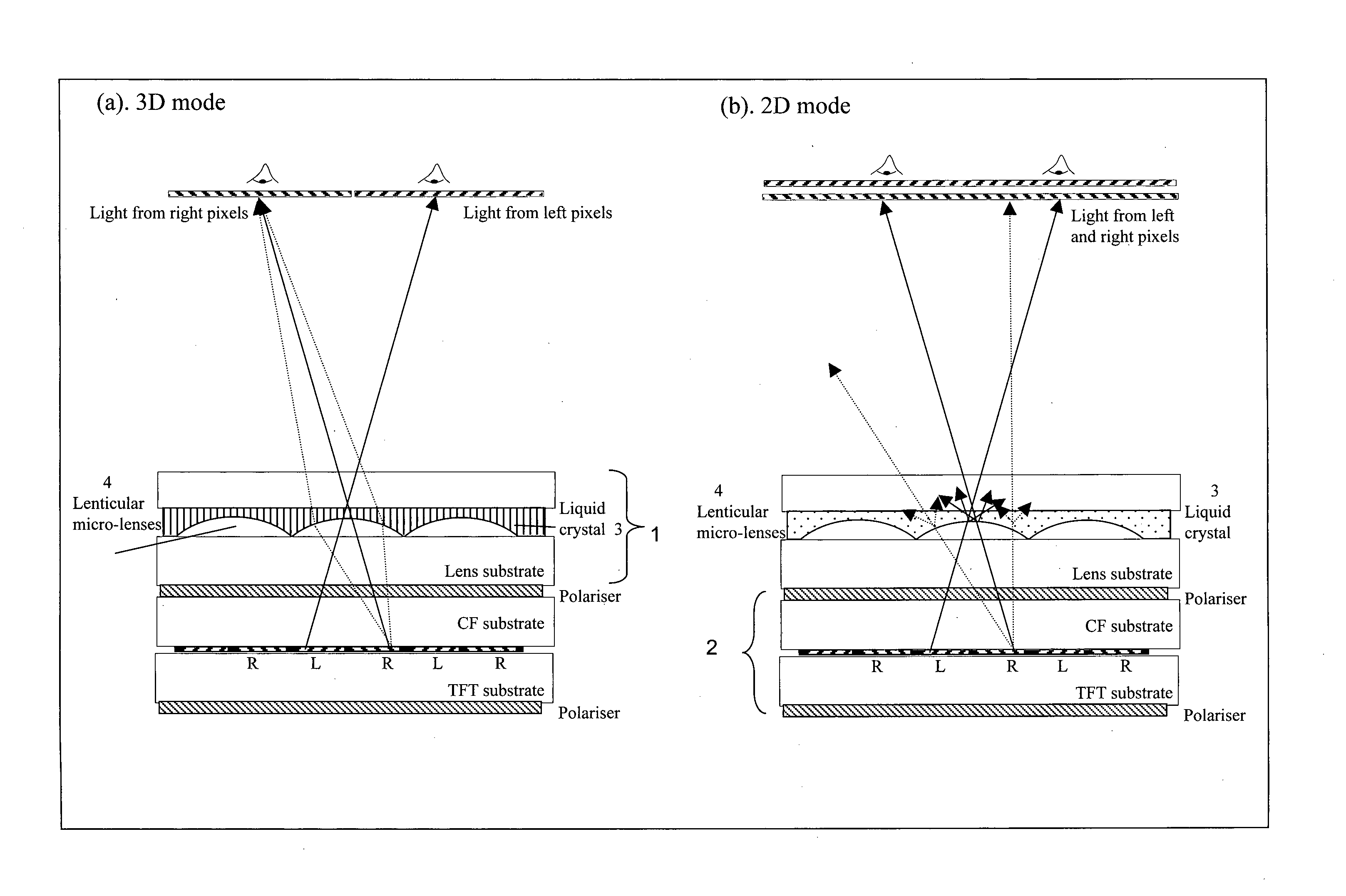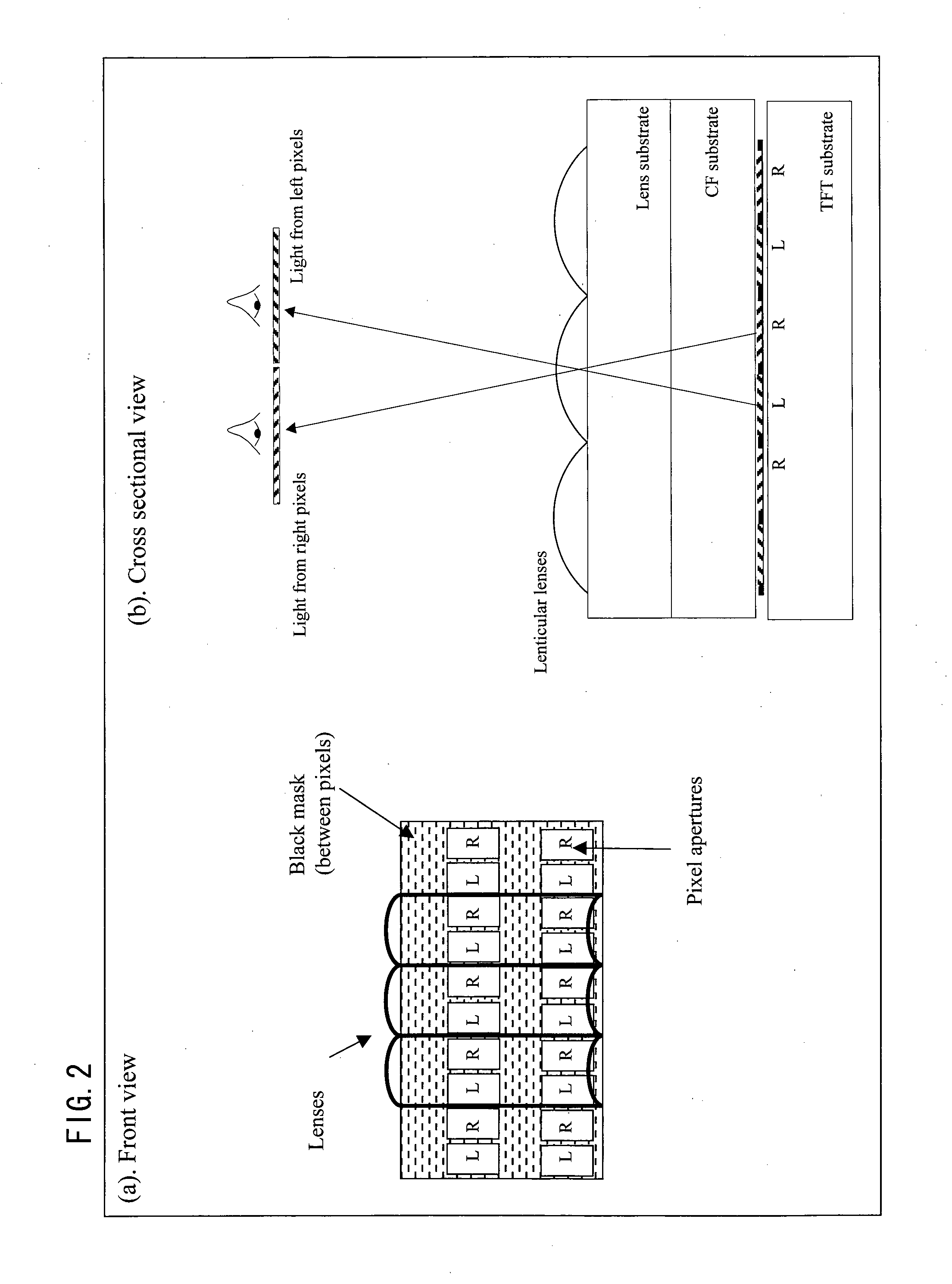Optical component and display
- Summary
- Abstract
- Description
- Claims
- Application Information
AI Technical Summary
Benefits of technology
Problems solved by technology
Method used
Image
Examples
embodiment 1
[0042]Embodiment 1 is described in the basic concept of the invention, and shown in FIGS. 3(a) and 3(b). This shows an optical component 1 having an array of microlenses 4. The microlenses are disposed on a substrate, and are planarised with an electro-optic layer, in this embodiment a LC layer 3. FIGS. 3(a) and 3(b) show the array of microlenses 4 being fully planarised by the LC layer 3—that is, the thickness of the liquid crystal layer is greater than (or equal to) the maximum thickness of the microlenses array—although in principle the invention could be effected with only partial planarisation of the microlenses (that is, with the thickness of the liquid crystal layer being less than the maximum thickness of the microlenses array). Electrodes (not shown) are positioned so that a voltage may be applied across the LC layer 3 to change its optical properties. The optical component 1 is positioned in the path of light from an image display panel 2.
[0043]The liquid crystal layer 3 i...
embodiment 2
[0050]A diagram of embodiment 2 is sketched in FIGS. 4(a) and 4(b). These again show a display formed of a switchable optical component 1 disposed over an image display panel 2.
[0051]The optical component 1 again has an array of microlenses 4, whose curved surfaces are at least partially planarised in with an electro-optic layer, in this example a LC layer 3 (FIGS. 4(a) and 4(b) show the LC layer 3 fully planarising the microlenses 4). Electrodes are positioned so that a voltage may be applied across the LC layer 3 to change its optical properties, as shown in the enlarged partial views of FIGS. 4(c) and 4(d).
[0052]The liquid crystal layer 3 is placed over the curved surfaces of the microlenses 4. The liquid crystal layer 3 may be placed directly against the curved surfaces of the microlenses, or there may be one or more components between the liquid crystal layer 3 and the curved surfaces of the microlenses (such as, for example an alignment layer and / or an electrode layer). Howeve...
embodiment 3
[0063]In a further embodiment the shape of the lens may be a Fresnel lens, as shown in FIG. 5. The main advantages of this are that the LC cell can be thinner, so less LC (or other electro-optical material) is needed to reduce cost, and the LC may switch between 2D and 3D modes faster. This embodiment may be combined with any one of the embodiments previously described herein—that is, the lens of any previous embodiment may be embodied as a Fresnel lens
[0064]Although certain preferred embodiments of the invention have been described above, the invention is not limited to the described embodiments and other variations are possible.
[0065]As an example, in the embodiments described above the lenses are embossed in a plastics sheet, but the invention is not limited to this. The directional effect of a black mask in a nominally non-directional mode described with reference to FIGS. 4a and 4b will occur in other switchable components, and the invention may for example be applied to other ...
PUM
 Login to View More
Login to View More Abstract
Description
Claims
Application Information
 Login to View More
Login to View More - R&D
- Intellectual Property
- Life Sciences
- Materials
- Tech Scout
- Unparalleled Data Quality
- Higher Quality Content
- 60% Fewer Hallucinations
Browse by: Latest US Patents, China's latest patents, Technical Efficacy Thesaurus, Application Domain, Technology Topic, Popular Technical Reports.
© 2025 PatSnap. All rights reserved.Legal|Privacy policy|Modern Slavery Act Transparency Statement|Sitemap|About US| Contact US: help@patsnap.com



